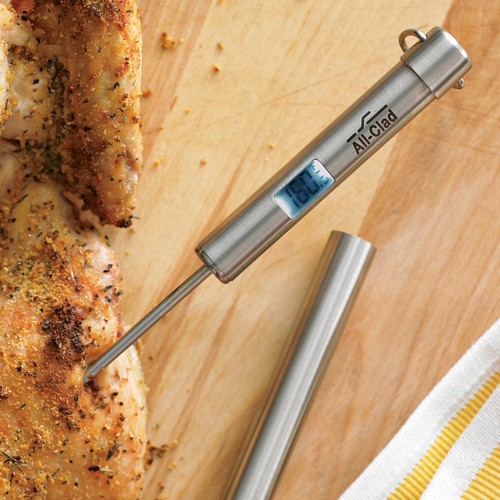
When testing roasted foods for doneness, there are some sensory cues to use. For a whole roast poultry, pierce a thigh to see if the juices run clear with no trace of pink or red. With experience, you can assess the degree of doneness of meat by pressing it with your fingertip and noting the resistance you feel. The more resistance, the more well-done the meat is.
However, the best way to judge a roast's internal temperature accurately is with an instant-read thermometer. At the earliest possible time the roast might be done, insert the thermometer into the thickest part, making sure that it does not touch bone. (Bone conducts heat and will skew the reading.) For poultry, insert the thermometer into the thickest part of the thigh. If further roasting is required, remove the thermometer and check again in 5 to 15 minutes. Keep in mind that the internal temperature will continue to rise by 5° to 10°F after the food has been removed from the oven.
Alternatively, you can use a leave-in thermometer. Designed to remain in the meat as it roasts, these oven-safe thermometers allow you to monitor the current internal temperature without opening the oven door.
Doneness temperatures will differ somewhat for different foods. Follow the directions in the recipe, taking your personal preferences into account.
Fish is done when its flesh firms up and turns opaque. Gently prod or cut into the top of the fish with a knife tip or fork. The flaky sections should easily separate, but the flesh should still look moist. An old rule of thumb calls for cooking fish for 10 minutes per inch. Because it is easy to overcook fish, start checking for doneness sooner rather than later.
Adapted from Williams-Sonoma Collection Series, Roasting, by Barbara Grunes (Simon & Schuster, 2002).
Recommended Products:
- $49.95
- $104.95







